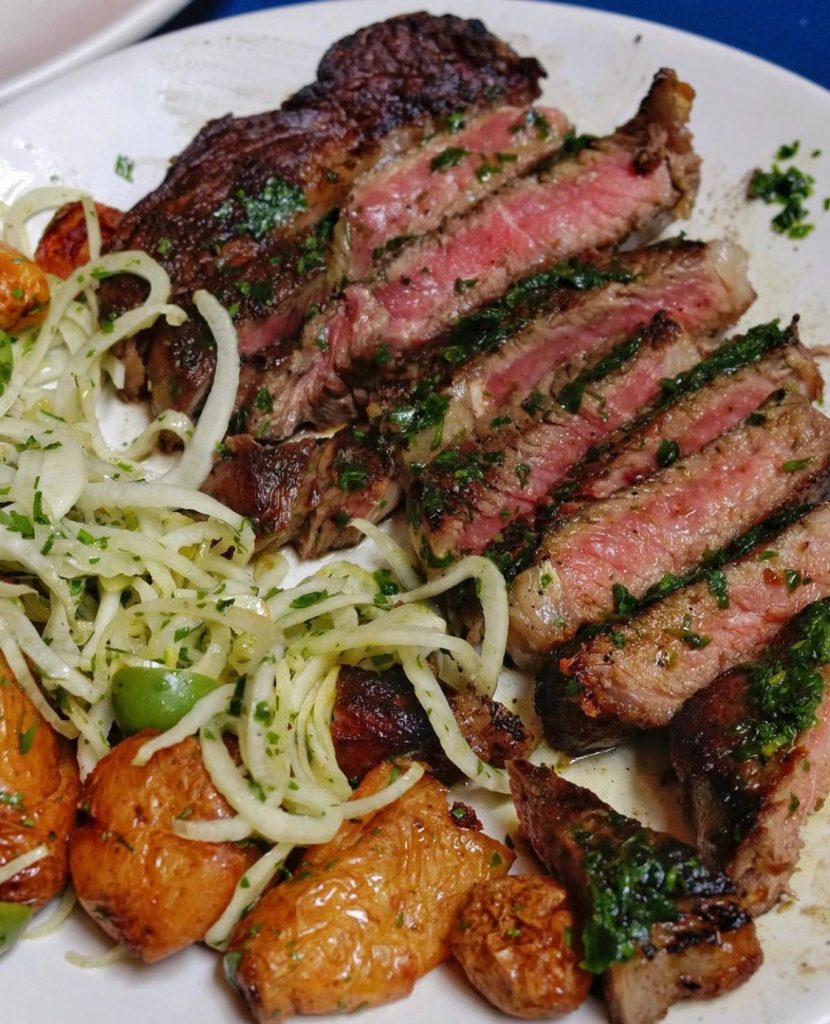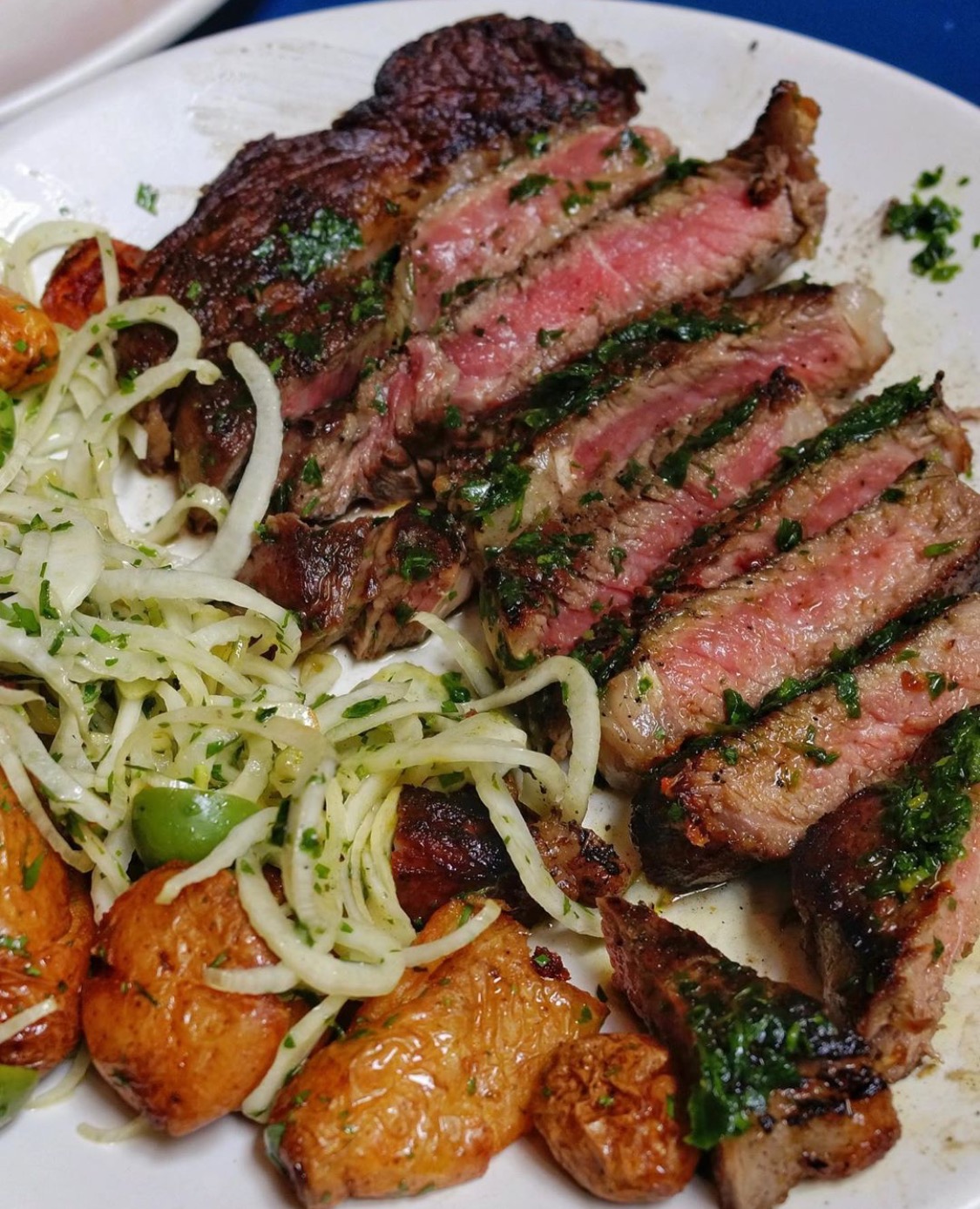
Believe it or not, it’s possible to eat the Italian staple and still maintain a trim figure or lose weight rapidly. For carb-lovers, hearing that bit of news feels a bit like winning the lottery.
Better yet, whipping up a slimmed-down noodle dish isn’t time consuming or difficult, nor does it drastically change the taste. No, this isn’t an elaborate joke; you’ve just got to learn the tricks of the trade—which we reveal below. Simply use our time-tested tips to whip up tasty, guilt-free pasta dishes and keep shedding those extra pounds. Buon appetito!
1. Pair It With A Side Salad
Before jumping into all the ways you can alter the actual pasta part of your dinner, let’s take a moment to talk about your side dish. Although your noodles’ plate neighbor may not seem important, it can actually greatly alter the slimming effects of your meal. Eating raw carrots with a starchy meal like pasta can lower after-meal blood sugar levels and boost satiety, according to Swedish researchers. Translation: Eating a side salad with some raw carrots and some of your other favorite veggies can help ward off after-meal hunger, which can help you consume fewer calories throughout the day and subsequently aid weight loss efforts. Bonus: Add a tablespoon of dressing to your greens. A bit of fat can help the body absorb cancer-fighting and heart-healthy nutrients like lycopene and beta-carotene. We like Cucina Antica Organic Ceasar because it fares well with Italian dishes, is void of cheap, unhealthy oils and is relatively low-cal.
2. Swap Your Noodle
The average American consumes 20 pounds of pasta each year—and most of it is the refined white stuff. What’s the trouble with that? This type of noodle is almost completely void of fiber and protein, two vital nutrients for weight loss. To boost the belly-filling fiber and hunger-busting protein in your meal, opt for a bean-based noodle like Banza Chickpea Shells (2 oz, 190 calories, 8 g fiber, 14 g protein) or Explore Asian Black Bean Low-Carb Pasta (2 oz 180 calories, 12 g fiber, 25 g protein). Alternatively, make the switch to Ronzoni Healthy Harvest Whole Grain Pasta (2 oz, 180 calories, 5 g fiber, 7 g protein). Eating whole grains can not only fill you up more than the refined stuff, but also lower blood pressure and reduce the risk chronic conditions like type 2 diabetes and heart disease.
3. Go Al Dente
Save time and slim down: Taking your noodles off the stove a few minutes early and enjoying them al dente can help keep you fuller longer, which can make saying no to seconds that much easier. According to scientists, hot water breaks down starch molecule bonds, which makes it easier for the body to convert carbs into fuel—not a good thing! In turn, blood sugar increases and then subsequently crashes, leaving you starving just a few hours after eating. Al dente pasta, on the other hand, keeps glucose levels steady, which wards off diet-derailing dips in energy.
4. Chill Out
Transform pasta from a diet no-no into a fat-frying champion simply by placing it in the fridge. When you cool down pasta, the drop in temperature changes its chemical structure into something called “resistant starch,” which, according to a study in the journal Nutrition & Metabolism, promotes fat oxidation. Not into the idea of eating your supper cold? Here’s our suggestion: Go ahead and enjoy your first bowl of pasta hot, but make a commitment to eating all the leftovers chilled. Once the noodles have been reheated, the resistant starch—and their slimming powers—is destroyed.
5. Max out on Veggies
In addition to eating a side salad on pasta night, you might also want to consider adding some vegetables to your pasta dish. Those who consume main dishes that incorporate veggies consume 350 fewer calories daily than those who eat their produce as a side dish, according to Penn State researchers. The likely reason: Veggies boost the amount of satiating fiber on your plate while also adding bulk. The result: You’ll likely feel satisfied while taking in fewer calories. Mixed spiralized zucchini with whole-grain spaghetti, or add chopped and sautéed broccoli, Brussels sprouts, peppers, tomatoes and onions to your penne plate. Typically add meat to your lasagna? Replace half of it with fresh spinach and slices of yellow squash and mushrooms. The options are truly endless!
6. Use Cheese As a Garnish
Some pasta recipes tell you to mix the cheese right into the pasta along with the sauce. Don’t do that. Most of the cheese that’s added before the cooking process will likely melt away into the depths of the dish, becoming nearly invisible. As a result, you’ll likely wind up adding even more to your portion once it’s plated. To healthify your dinner, only sprinkle the cheese on top of the dish after it’s on your plate. This ensures you’ll get a bit of cheese in every bite without taking in additional “invisible” cheese calories along the way. Besides cutting back on waist-widening calories, this tactic eliminates a fair share of the artery-clogging fat, without drastically altering the taste.
7. Change Your Meat
We all love indulgent dishes like spaghetti carbonara and hearty toppers like meat sauce, but they aren’t exactly waist-friendly. No shocker there! Spaghetti carbonara recipes typically call for thick-cut bacon, which carries about 70 calories and 6 grams of fat in two slices. Using the same amount of prosciutto in its place can save you 40 calories and 2 grams of heart-harming fat. While that may not seem like a lot, the savings may be far more than that depending on your portion size. Plus, every calorie counts when you’re fighting back against the bulge. If meat sauce is your go-to, cut calories and fat without changing the taste with two simple steps: First, buy a lean ground cut of beef (that’s the obvious part), then, after browning the meat in a skillet, put it in a strainer and rinse it with hot tap water—before adding any sauces or seasonings. This helps wash away excess fat clinging to your dinner, which will help save you time at the gym burning off your meal.
8. Re-Think Your Red Sauce
Speaking of sauce, a lot of the canned varieties are filled with excess calories, mounds of salt and buckets of added sugar—not nutrients you want on your plate when you’re looking to get lean. Making your own simple pasta topper (by combining fresh tomatoes, garlic, olive oil, basil and black pepper over a hot skillet) is ideal. However, if you’re short on time or not so skilled in the kitchen, opt for one of our favorite bottled varieties: Amy’s Light in Sodium Organic Family Marinara has just 80 calories, 290 milligrams of sodium and 5 grams of sugar in a half cup and Ragú Light No Sugar Added Tomato & Basil has 50 calories, 320 milligrams of sodium and 6 grams of sugars for the same serving size. Going with either of these options is sure to keep excess sugar, calories and blood vessel-harming salt off of your fork. For the top options, don’t miss our exclusive report: 40 Best and Worst Pasta Sauces.
9. Change Up Your Fat
Fettuccine alfredo is often referred to as a heart attack on a plate—and with good reason. The Cheesecake Factory’s chicken-filled take on the dish carries 2,300 calories and 103 grams of saturated fat. That’s the fat equivalent of 51 Chicken McNuggets! And buying a canned alfredo sauce isn’t much better. A mere half-cup of Newman’s Own Alfredo has 180 calories, half a day’s saturated fat and more than a third of the day’s sodium. Yikes! Next time the craving for something creamy strikes, whip up Eat This, Not That’s 540-calorie Loaded Alfredo with Chicken and Vegetables instead. Alternatively, make a creamy sauce by combining avocados, basil, garlic, olive oil, salt, pepper and lemon juice in a food processor. While this sauce is also laden with fats, they’re the heart-healthy kind that can help lower cholesterol and triglyceride levels. Avocados can also quell hunger pangs and fry stubborn belly fat, which is great news if you’re trying to slim down.
10. Add Heat
Arrabbiata sauce not only tastes great, but can also help you lose weight. What gives the classic pasta topper its better-body super powers? It’s made with red chili peppers, which contain a spicy, appetite-suppressing compound called capsaicin. The compound also helps boost thermogenesis—the body’s ability to burn food as energy—and keeps your metabolism going strong. Whip up a homemade version of the sauce yourself or pick up a bottle of Cucina Antica Spicy Arrabbiata. A half-cup of the stuff has 45 calories, 2 grams of fat and 3 grams of sugar—stats that put other jarred sauces to shame. If smothering all your noodles in Arrabbiata is too much for your tongue to take, try sprinkling red chili pepper flakes on your plate before digging in to reap the benefits. Spicing up your dishes just happens to be one of the 55 Best-Ever Ways to Boost Your Metabolism.







